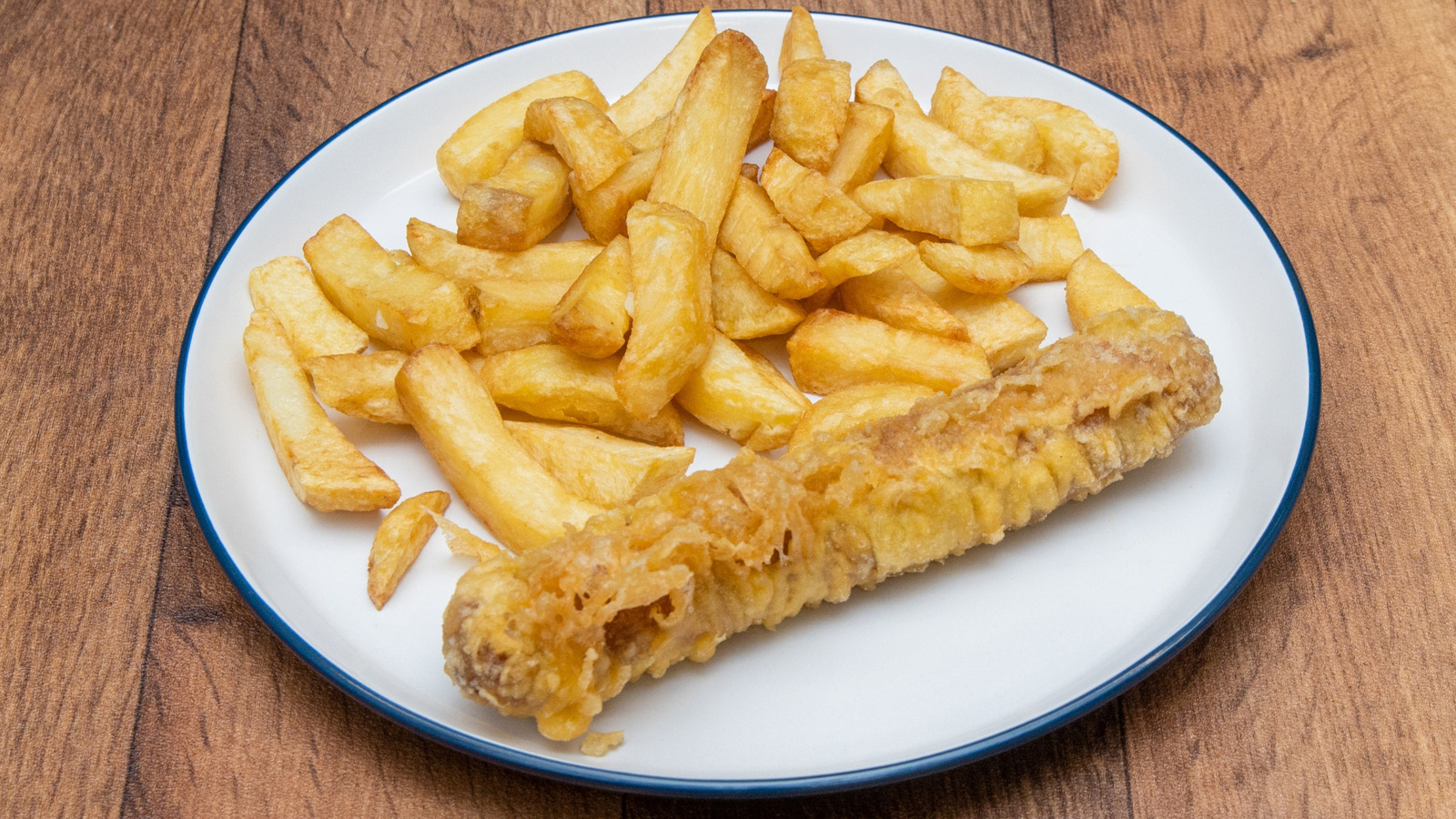If you've ever heard of fish and chips, then you're probably aware that it involves a piece of thick, battered cod that's been fried to crispy-on-the-outside but soft-and-pillowy-on-the-inside perfection, plus a heaping helping of thick cut potato wedges, called chips in Britain. This wondrous form of starchy goodness must be a welcome sight to American tourists and ex-pats, who will find them quite similar to what we know as fries. But are they the same thing? As it happens, British chips could be labeled as a type of fry, as they vaguely resemble the French fries that are served up at most fast food chains and sit-down restaurants, which are on the long and thin side.
However, chips tend to be thicker, though not as thick as American steak fries, and a bit stubbier, more small finger-sized. And they certainly differ from all the other kinds of fries Americans know and love, including waffle, curly, and crinkle cut. Chips come in one shape: Rectangular (or slightly curved along one side, where the potato naturally curves).
More differences between British chips and American fries One of the main differences between British chips and American fries is the type of potato most commonly used to make each. The best potatoes for chips are Desiree, King Edwards, and Maris Pipers, which tend toward waxiness and have just the right amount of starch to crisp up nicely in the oil. However, for french fries, makers are advised to stay away from waxy potatoes and instead focus solely on .


















